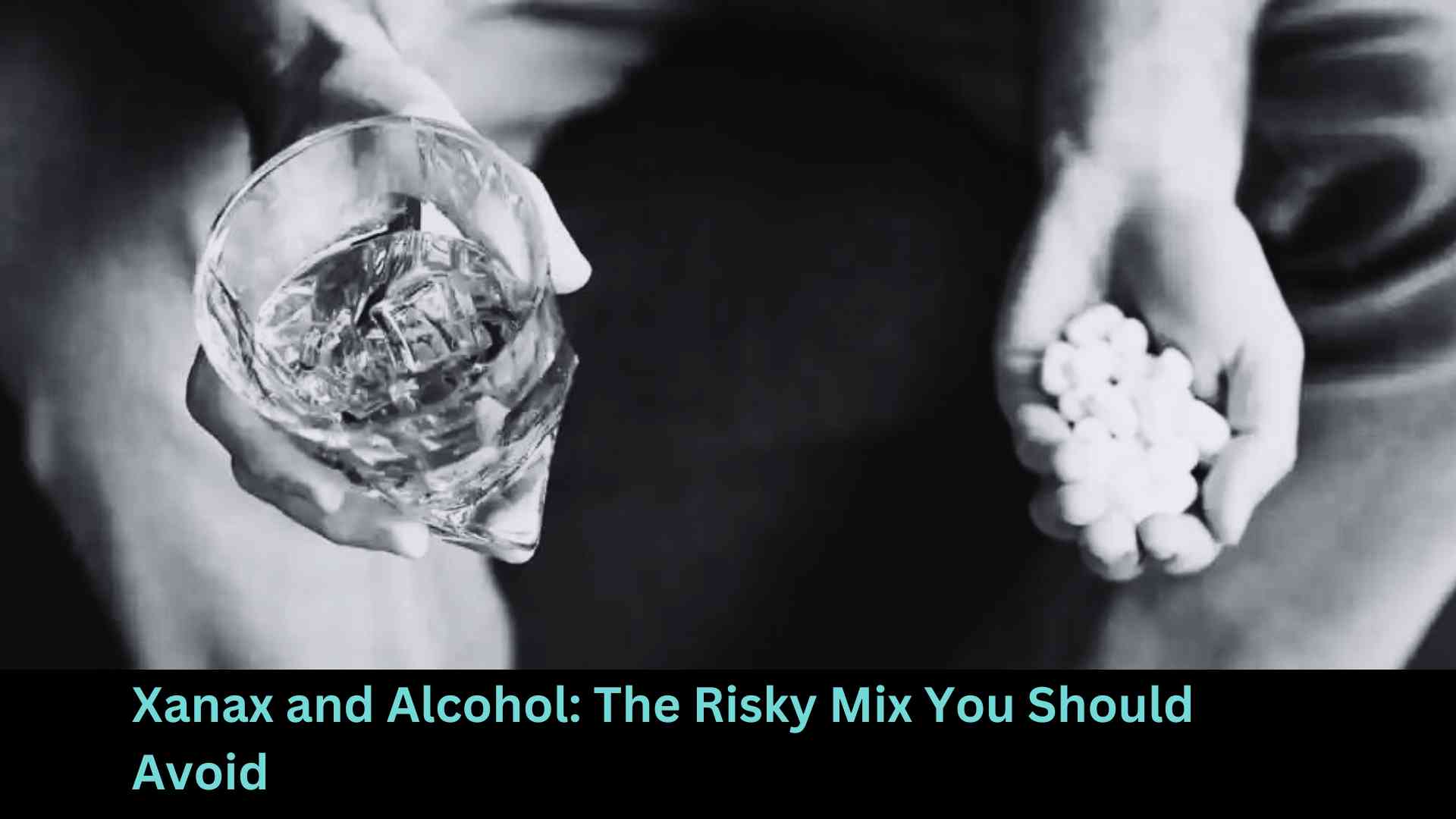
- Xanax
-
by rohit1
Xanax and Alcohol: A medication commonly prescribed for anxiety and panic disorders, can be a potent tool in managing these conditions. However, when combined with alcohol, it becomes a dangerous and potentially life-threatening cocktail. Combining Xanax and alcohol can have serious and potentially life-threatening consequences.
Xanax, also known as alprazolam, is a prescription medication commonly used to treat anxiety and panic disorders. It is a type of medicine called benzodiazepines. It makes the central nervous system slow down and helps you feel calm.

Xanax and Alcohol: Introduction
Understanding Xanax and Its Uses
Xanax, the brand name for alprazolam, is a medication prescribed to alleviate symptoms of anxiety and panic disorders. It belongs to a class of drugs called benzodiazepines.
The Dangerous Duo: Xanax and Alcohol
While Xanax can be an effective treatment for anxiety, its combination with alcohol is perilous. This guide delves into the risks and consequences of mixing these substances.

Xanax and Alcohol: Xanax and How It Works
Mechanism of Action
Xanax enhances the effects of gamma-aminobutyric acid (GABA), an discipline dopamine that calms the central nervous system.
Therapeutic Uses
Doctors prescribe Xanax for various anxiety and panic disorders, and it provides relief from distressing symptoms.
Xanax and Alcohol: Alcohol and Its Effects
Impact on the Central Nervous System
Alcohol is a depressant that affects the central nervous system, leading to impairment in coordination, judgment, and cognitive function.
Social and Cultural Aspects
The consumption of alcohol is deeply ingrained in many societies, but its effects on health can be detrimental.
The Lethal Mix: Xanax and Alcohol
Potentiation of Central Nervous System Depression
When combined, Xanax and alcohol potentiate each other’s depressant effects, leading to severe central nervous system depression.
Inhaling Depression and Overdose Risk
This combination can suppress breathing, potentially leading to fatal inhaling depression and overdose.
Common Reasons for Combining Xanax and Alcohol
Self-Medication
Some individuals use this combination to self-medicate anxiety or stress, unaware of the dangers.
entertaining Use
Others may use it entertaining, seeking euphoric effects.
Lack of Awareness
Lack of awareness about the risks plays a significant role in the combination’s prevalence.
The Immediate Dangers
Impaired Coordination and Judgment
Mixing Xanax and alcohol impairs coordination, judgment, and decision-making, increasing the risk of accidents.
Memory Blackouts
Alcohol amplifies the amnesia-inducing effects of Xanax, leading to memory blackouts.
Increased Risk of Accidents
Impaired motor skills and cognitive function heighten the risk of accidents, including falls and car crashes.
Long-term Health Consequences
Liver Damage
Long-term use of both substances can strain the liver, potentially leading to severe damage.
Cognitive Impairment
Combined use may result in long-lasting cognitive impairment, affecting memory and overall brain function.
Mental Health Implications
The combination can exacerbate mental health issues, leading to anxiety and depression.
Recognizing Signs of Overdose
Symptoms and Warning Signs
Recognizing the signs of overdose, including extreme drowsiness, slowed or irregular breathing, and confusion, is crucial.
Seeking Immediate Medical Attention
If you suspect an overdose, you must seek immediate medical attention to prevent fatal outcomes.
Strategies to Avoid Mixing Xanax and Alcohol
Healthcare Provider Communication
Open communication with healthcare providers is essential to discuss medication risks and alternatives.
Medication Management
Healthcare providers can prescribe alternative treatments or adjust medication regimens.
Substance Abuse Treatment
For those struggling with substance abuse, addiction treatment and therapy are available.
Education and Awareness
Raising awareness about the dangers of combining Xanax and alcohol can help prevent future incidents.
Conclusion
We stressed the need for responsible medication use. It is crucial to prioritize our health and make informed decisions. This will help us avoid the dangerous combination of Xanax and alcohol. The risks of mixing Xanax and alcohol. It covers overdose recognition, treatment choices, and anxiety management options. In conclusion, combining Xanax and alcohol is a risky mix that can have severe consequences for both physical and mental health. The dangers include increased sedation, impaired judgment and coordination, inhaling depression, and the potential for overdose. It’s important to put your health first and avoid this risky mix by listening to doctors and getting assistance if necessary.

Need more to know
Alcohol, on the other hand, is a depressant that also affects the central nervous system. When someone takes Xanax and alcohol together, the combination intensifies their effects, leading to increased sedation and impairment. This can result in a range of dangerous outcomes, including slowed breathing, loss of consciousness, and even death.
One of the most significant dangers of combining Xanax and alcohol is the potential for overdose. Both substances slow down the central nervous system.
When used together, they can make breathing slower and shallower. This can lead to oxygen deprivation and, in severe cases, inhaling failure. Signs of overdose may include extreme drowsiness, confusion, slurred speech, slowed reflexes, and difficulty breathing.
Another risk of combining Xanax and alcohol is impaired judgment and coordination. Both substances can impair cognitive function and motor skills, making it dangerous to drive or operate machinery. This can make accidents and injuries more likely, not just for the person taking the mix but also for others nearby.
Furthermore, the combination of Xanax and alcohol can have a negative impact on mental health. Xanax helps with anxiety, but mixing it with alcohol can make depression worse and increase the chance of suicidal thoughts. Additionally, the combination can lead to memory loss, confusion, and impaired decision-making, which can further contribute to mental health issues.
To stay safe, follow the prescribed Xanax dose and don’t drink alcohol when taking it. It is crucial to have open conversations with your doctor regarding your alcohol consumption and any past issues with drugs. If you or someone you know struggles with substance abuse or addiction, I strongly recommend seeking professional help.




